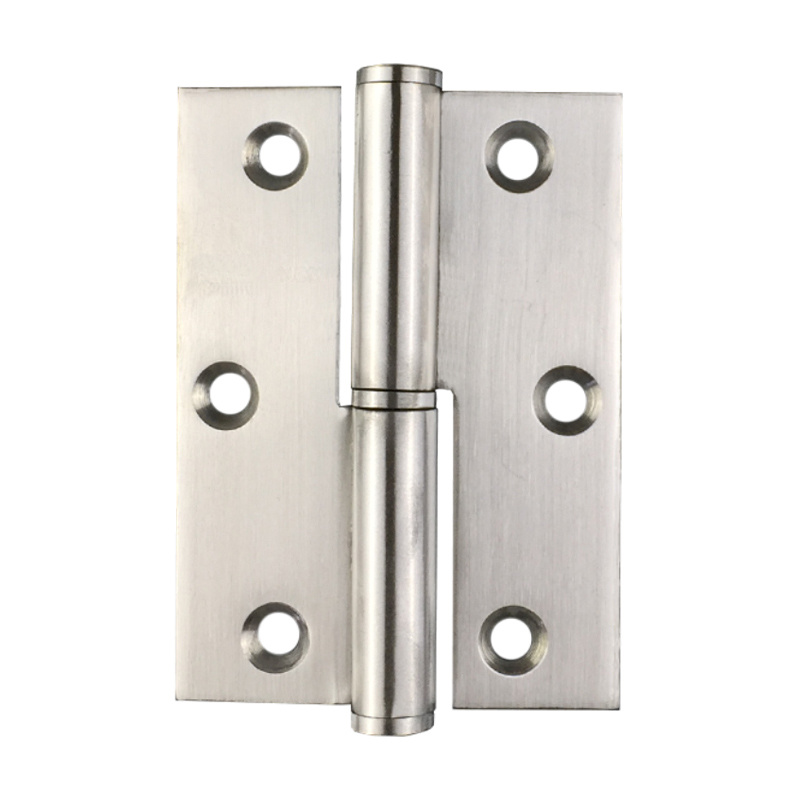Understanding Butt Hinges: A Comprehensive Guide for Hardware Enthusiasts
2025-05-11

Butt hinges are essential hardware components widely used in various applications, particularly in doors and cabinets. Known for their simple yet effective design, these hinges consist of two plates (or leaves) that are joined by a pin, allowing for smooth rotation. Their strength and durability make them ideal for both residential and commercial use.
One of the primary advantages of butt hinges is their ability to support heavy doors. The design allows the weight of the door to be distributed evenly across the hinge, preventing sagging and ensuring longevity. When selecting butt hinges, it is crucial to consider the weight and size of the door, as well as the frequency of use. For instance, a high-traffic door may require a more robust hinge to withstand constant movement.
Butt hinges come in various materials, including stainless steel, brass, and bronze. Each material offers unique benefits: stainless steel is known for its rust resistance and strength, while brass adds an elegant aesthetic to any door. When choosing the right material, consider the environment in which the hinge will be used. For outdoor applications, stainless steel is often the best choice due to its resistance to corrosion.
Another important aspect to consider is the finish of the butt hinge. Finishes can range from polished and brushed to painted options, providing both functional and decorative solutions. Choosing the right finish can enhance the overall look of your project while ensuring the hinge remains functional over time.
Installation is another critical factor when it comes to butt hinges. Proper alignment and secure fastening are necessary to ensure optimal performance. It is advisable to pre-drill holes to avoid splitting the wood, especially in hardwood applications. Additionally, using screws that match the size and style of the hinge can improve the overall aesthetic and functionality.
In terms of maintenance, butt hinges are relatively low-maintenance, but regular inspections can prolong their lifespan. Ensure that they are free from debris and that the pin is lubricated to promote smooth operation. If you notice any signs of wear or damage, prompt replacement is recommended to maintain the security and functionality of doors.
In conclusion, butt hinges are a vital component in the hardware industry, providing essential support for doors and cabinets. By understanding the various types, materials, finishes, and installation techniques, you can make informed choices that enhance the functionality and appearance of your projects. Whether you're a DIY enthusiast or a professional in the field, mastering the use of butt hinges will undoubtedly contribute to the success of your hardware endeavors.
One of the primary advantages of butt hinges is their ability to support heavy doors. The design allows the weight of the door to be distributed evenly across the hinge, preventing sagging and ensuring longevity. When selecting butt hinges, it is crucial to consider the weight and size of the door, as well as the frequency of use. For instance, a high-traffic door may require a more robust hinge to withstand constant movement.
Butt hinges come in various materials, including stainless steel, brass, and bronze. Each material offers unique benefits: stainless steel is known for its rust resistance and strength, while brass adds an elegant aesthetic to any door. When choosing the right material, consider the environment in which the hinge will be used. For outdoor applications, stainless steel is often the best choice due to its resistance to corrosion.
Another important aspect to consider is the finish of the butt hinge. Finishes can range from polished and brushed to painted options, providing both functional and decorative solutions. Choosing the right finish can enhance the overall look of your project while ensuring the hinge remains functional over time.
Installation is another critical factor when it comes to butt hinges. Proper alignment and secure fastening are necessary to ensure optimal performance. It is advisable to pre-drill holes to avoid splitting the wood, especially in hardwood applications. Additionally, using screws that match the size and style of the hinge can improve the overall aesthetic and functionality.
In terms of maintenance, butt hinges are relatively low-maintenance, but regular inspections can prolong their lifespan. Ensure that they are free from debris and that the pin is lubricated to promote smooth operation. If you notice any signs of wear or damage, prompt replacement is recommended to maintain the security and functionality of doors.
In conclusion, butt hinges are a vital component in the hardware industry, providing essential support for doors and cabinets. By understanding the various types, materials, finishes, and installation techniques, you can make informed choices that enhance the functionality and appearance of your projects. Whether you're a DIY enthusiast or a professional in the field, mastering the use of butt hinges will undoubtedly contribute to the success of your hardware endeavors.
PREVIOUS:
Contact Us
E-mail :
ivyhinge@163.com
Phone/WhatsApp:
+86 18924942354
Address:
XIAOLAN TOWN,ZHONGSHAN cIty,GUANGDONG province,China




